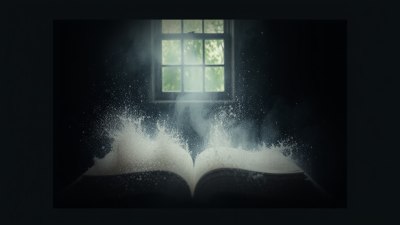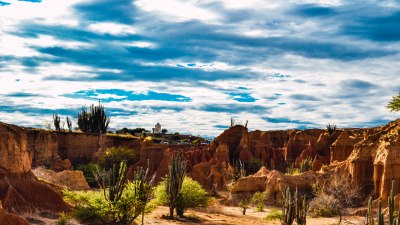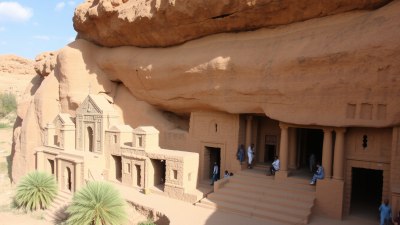The Dust Here Recognizes You
Explore the profound connection between memory and place in 'The Dust Here Recognizes You'.

In the intersection of memory and physical space, there exists a profound recognition that transcends time—a connection that is palpable in the dust that gathers in corners, the crinkled pages of forgotten books, and the whispers of history echoing through the walls of our homes. This phenomenon, often overlooked, invites us to delve deep into our past and reflect on the myriad experiences that have shaped us. How does the dust recognize us, and what stories are etched into the grains of time that linger in our surroundings? This exploration reveals the intimate relationship between places we inhabit and the memories we carry, ultimately leading us to a broader understanding of ourselves and our journeys.
Memory is not simply a collection of events; it is a living entity molded by the environments we traverse. Each home we have inhabited, every room we have filled with laughter or sorrow, contributes to the mosaic of our identity. Much like the dust that gathers silently over time, our memories accumulate, morphing and changing as we revisit them or as new experiences come to the forefront. The dust here, in its stillness, seems to acknowledge our presence, a reflection of the moments we've shared in these spaces.
The Essence of Place
Every corner of a room holds a story; every surface bears witness to our lives. The essence of a place can invoke memories long buried and feelings that have lingered unexpressed. The act of returning to a familiar space often brings with it a rush of nostalgia, as the senses awaken to the echoes of laughter or the remnants of tears shed within those walls. It's fascinating how a simple scent, the texture of the furniture, or even a fleeting shadow can stir emotions that transport us back to a different time. The essence of place feeds our memory, allowing us to feel the warmth of reconnection, even after years apart.
The Nature of Memory
Memory itself is a complex tapestry, woven from threads of sensory experiences and emotional connections. It is an amalgamation of sights, sounds, and feelings that inform our understanding of who we are. As we move through life, we gather these impressions, much like dust, forming layers that create a dense, textured understanding of our existence. This accumulation can lead to both clarity and confusion as we sift through the past to make sense of our present. Our memories serve not only as a means of self-reflection but also as a bridge linking us to others. When we share stories of our past, we weave connections that transcend time, reminding us that we are not alone in our experiences.
Dust as a Metaphor
The dust that gathers in our homes can be viewed as a metaphor for accumulated experiences. Just as dust settles on surfaces, memories settle within us—waiting to be acknowledged, stirred, and brought to light. Recognizing this dust is more than a physical act; it involves embracing the stories tied to it. As we sweep away the dust, do we also sweep away our past? Or do we honor it by acknowledging each grain as a piece of our history? Understanding that the dust recognizes us prompts a deeper exploration of self and belonging.
Connecting with Our Roots
Through stories of the places we have lived, we can trace the trajectory of our lives back to their origins. Those first homes where we learned to crawl and smile are held within us like precious artifacts. Each place we have called home represents a chapter of our lives—a journey marked by transformation, growth, and change. Recognizing the dust of those places is an act of honoring our roots, allowing us to reflect on how our experiences have shaped us. By doing so, we can cultivate a stronger sense of self-awareness and extend our understanding of the interconnectedness of our stories.
The Role of Nostalgia
Nostalgia plays a significant role in how we interpret our memories and the spaces we inhabit. It often brings forth a longing for the past, a yearning for the moments that shaped us. Dust, as a tangible representation of time's passage, evokes this nostalgia—reminding us of what once was and conjuring images of lighter days. However, nostalgia can be a double-edged sword, leading us to romanticize the past while simultaneously mourning its loss. The dust here recognizes us not only by bearing witness to our lives but also by inviting us to confront our emotions. Embracing both the joy and the sorrow allows us to move forward in our journeys while carrying our history with us.
Legacy and Continuity
Our memories form a legacy that persists over generations. Just as the dust gathers in our homes, the stories we tell and the experiences we share accumulate, creating a sense of continuity across time and space. The legacies of our ancestors and the wisdom they impart can guide us as we navigate our own paths. Recognizing the dust connecting us to previous generations encourages us to honor our heritage, celebrate our differences, and cherish the experiences that shape our communities. When the dust here recognizes us, it also reminds us of the larger story we are a part of—one that encompasses the lived experiences of those who came before us.
The Modern Urban Experience
In an age of rapid urbanization and technological advancement, our connection to physical spaces often takes on new dimensions. The bustle of city life can sometimes drown out the whispers of memories tied to specific places. High-rise buildings replace quaint homes, and modernity often overlooks the significance of heritage. Yet, even amidst this change, the dust remains—a constant reminder of the lives once lived within the shadows of towering structures. Our challenge is to cultivate an awareness of where we are and how we engage with our urban environments. Through this lens, we can find ways to honor our past while embracing the ever-evolving nature of our present.
The Power of Reflection
To fully grasp the significance of the dust that recognizes us, we must engage in reflection. Taking time to pause, to observe the spaces we inhabit, and to recall the memories tied to them opens up new pathways for understanding. Journaling, storytelling, and creative expression offer outlets for exploring these themes deeply. By articulating our thoughts and experiences, we draw connections between what we’ve lived through and who we are becoming. Reflection is essential for personal growth as it invites us to confront changes and celebrate resilience. It encourages us to honor our past while also envisioning our future.
Creating Spaces for Memory
As we navigate through life, we can become intentional about the spaces we create and occupy. Designing our environments to reflect our values and memories adds layers of meaning to our experiences. Spaces filled with artifacts, photographs, and heirlooms hold the stories of both past and present, connecting us to our identity. In doing so, we grant the dust that recognizes us a new purpose: as a guardian of memory crafted through shared experiences. Every piece we place in our environment contributes to a narrative that recognizes our journey and allows us to celebrate our uniqueness.
Conclusion
In conclusion, the dust here recognizes us on multiple levels—a reflection of our memories, the places we have inhabited, and the legacy we carry into our future. It embodies the stories that shaped us and honors the connections we forge along the way. As we navigate the spaces of our lives, let us not forget the importance of recognizing our past—embracing the dust that gathers in corners as both a testament to our history and a guide for our journey forward. Through this understanding, we can cultivate deeper connections with ourselves, our communities, and the world at large, honoring the dust while navigating our unique paths. Ultimately, recognizing the dust allows us to understand that while time changes our surroundings, it does not erase our stories. Instead, it layers them, just as dust layers upon surfaces, waiting to be acknowledged and cherished.











